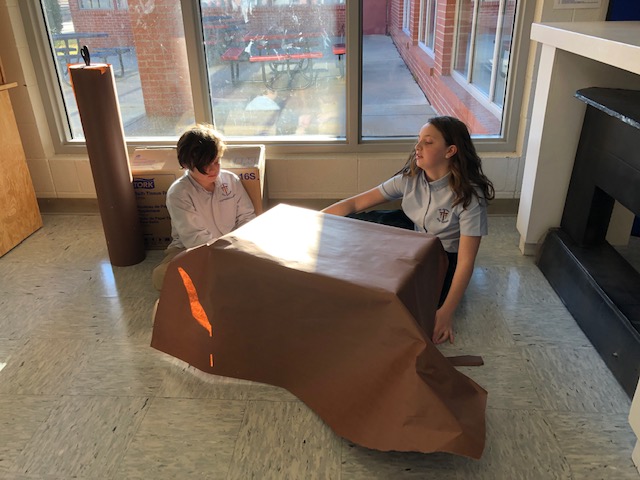5th GRADE NEWS
LANGUAGE ARTS AND HISTORY:
It’s time for our annual Colonial Living History project. This is one of my personal favorite projects, as it enables 5th graders to truly envision the lives of colonists in the three regions as well as engage in true project-based learning. This year, our students chose to live in Maine (a part of Massachusetts Colony) in New England, New Jersey in the Middle colonies, and Maryland in the Southern colonies. Each colony researched their daily life, as well as their geography, natural resources, and economy, in order to design a business and room appropriate to their colony. Students also chose names, wrote journal entries about a day in their lives, and prepared bibliographies of their research sources. They also created “fraction” quilt pieces in math to include in their displays, and made butter the “colonial way” in science. Now, the fun begins-- transforming the middle school commons into a colonial village. Students have begun building the rooms to house their businesses and their daily lives. With the help of the invaluable Ms. Denise, 5th graders do most of the work themselves. On Friday, students will present their rooms and themselves in costumes to their parents and the rest of the campus. We cannot wait!
MATH AND SCIENCE:
Colonial Investigations in Math and Science
In conjunction with their studies of Colonial America, fifth grade students created and analyzed fraction quilts in math. We studied the craft of quiltmaking and learned how quilts would often tell a story. Students then chose a design for their own section of a quilt and colored their patterns on graph paper. They calculated the fraction, decimal, and percent of each colored section.
We also grew plants and made butter in science to experience these elements of colonial living. Students planned a small-scale garden of peas, barley, and corn, and it was exciting when the seeds finally began to sprout. They researched how these plants would interact with other living organisms in an ecosystem and created a food web to map out the flow of energy.
To make butter, we found through experimentation that it takes approximately ten minutes of vigorous shaking to turn heavy cream from a liquid into solid butter. We also debated whether the change was physical or chemical and found that solid (pun intended) arguments could be made for both cases. Sampling the freshly made butter on bread was perhaps the most delightful part of our lesson.
“This week was super fun. The reason why is because I learned about plants. I also learned about the ecosystem.” ~Zachary
“My favorite activity was working on the colonies project . It was fun planting seeds and making a quilt. We get to build our house with Ms. Denise. It was fun combining math and science for the colonial fair.” ~Staten
“This week I learned about colonies. It was fun. I loved it. I love school.” ~Ayres
“I enjoyed every thing about this week. When you said we were going to do quilts I was so excited. Thank you for an awesome week.” ~Brayden
“My most memorable learning experience this week was growing the plants in science. At first I didn't know what barley was, but when I researched it I found it was used for several purposes.” ~Morgan










